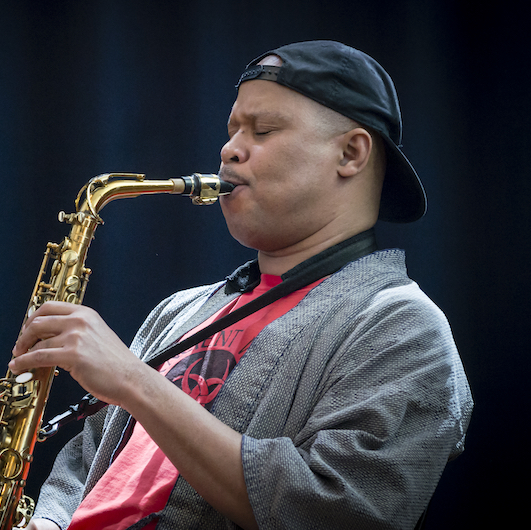
Steve Coleman a commencé la musique juste avant son 14ᵉ anniversaire, en tant qu’élève de South Shore High School dans le sud de Chicago. Son premier instrument était le violon, mais il a rapidement opté pour le saxophone alto la même année. Après trois ans à étudier les bases musicales et la technique, il s’est tourné vers l’improvisation, découvrant la musique de Charlie Parker, un favori de son père.
Steve a étudié à l’Illinois Wesleyan University avant de rejoindre la Roosevelt University (Chicago Music College) pour s’immerger dans la vie musicale nocturne de Chicago. Il a cherché à apprendre auprès de saxophonistes influents comme Von Freeman, Bunky Green, Gido Sinclair, et Sonny Greer. En 1978, il dirigeait un groupe au New Apartment Lounge, jouant des classiques de Parker et composant sa propre musique. Cependant, il ressentait une stagnation créative et a décidé de s’installer à New York.
Arrivé à New York en auto-stop, Steve a résidé temporairement au YMCA et décroché un premier contrat avec le Thad Jones-Mel Lewis Big Band, suivi par des collaborations avec le Sam Rivers Big Band, le Cecil Taylor’s Big Band, et d’autres. Il a travaillé avec des artistes comme David Murray, Doug Hammond, Dave Holland, Michael Brecker, et Abbey Lincoln, tout en étant profondément influencé par Von Freeman, Sam Rivers, et Doug Hammond.
Steve a formé son groupe emblématique, Steve Coleman and Five Elements, qui est devenu la base de ses activités musicales. Jouant dans des clubs à Harlem et Brooklyn, le groupe a développé le concept M-Base, une approche philosophique de la musique centrée sur la création à partir de ses expériences personnelles. En 1985, il a enregistré ses premiers albums sur le label JMT, dont Motherland Pulse, On The Edge Of Tomorrow, et World Expansion.
En 1993, un voyage au Ghana, où il a étudié le langage des tambours Dagbon, a profondément marqué sa musique et sa philosophie, influençant des albums comme Def Trance Beat et A Tale of 3 Cities. D’autres voyages à Cuba, au Sénégal, et en Inde ont renforcé son lien entre les traditions anciennes et l’improvisation moderne.
Parmi ses collaborations notables figurent son travail avec AfroCuba de Matanzas (album The Sign and The Seal), la création de Steve Coleman and The Mystic Rhythm Society, et The Council of Balance, explorant les philosophies anciennes et les traditions africaines.
Steve a également collaboré avec des institutions influentes comme l’IRCAM à Paris, où il a reçu des commandes pour développer des logiciels interactifs. Son approche novatrice intègre des outils technologiques comme The Improviser, reflétant son engagement envers la technologie et la composition musicale.
Parmi ses albums marquants :
•Functional Arrhythmias (2013), inspiré par les rythmes cycliques du corps humain.
•Synovial Joints (2015), un travail pour grand ensemble.
•Morphogenesis (2017), mettant en vedette l’ensemble Natal Eclipse.
Steve a reçu de nombreuses distinctions, dont la bourse MacArthur (2014), le Doris Duke Artist Award (2015), et la Guggenheim Fellowship (2014). Il a enseigné à l’Université de Californie à Berkeley et dirigé des résidences artistiques à travers le monde via sa fondation à but non lucratif, M-Base Concepts, Inc.
Aujourd’hui, Steve continue d’inspirer avec sa musique visionnaire, intégrant les savoirs anciens, les traditions culturelles, et l’innovation technologique, repoussant ainsi les limites du jazz contemporain.
